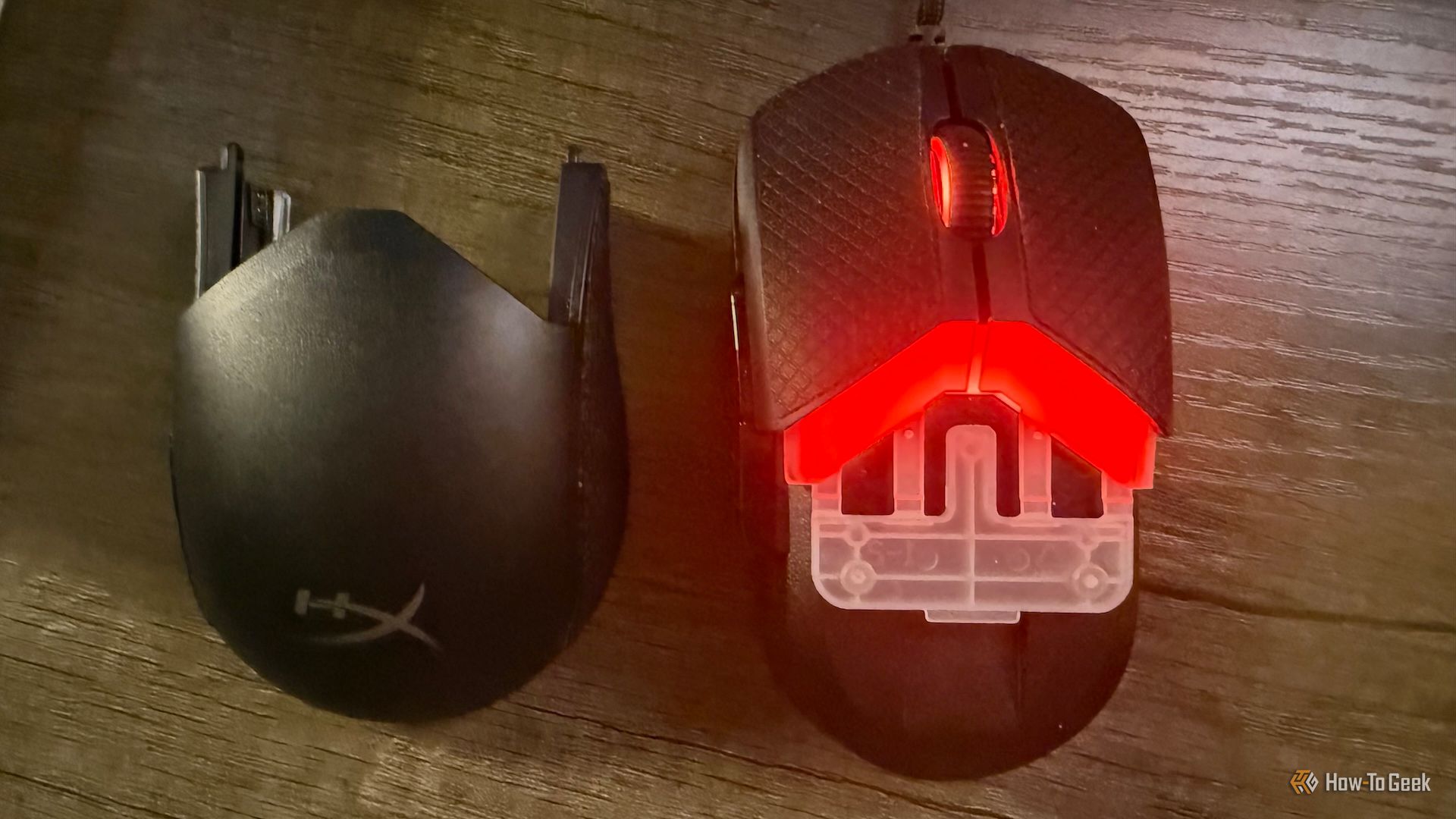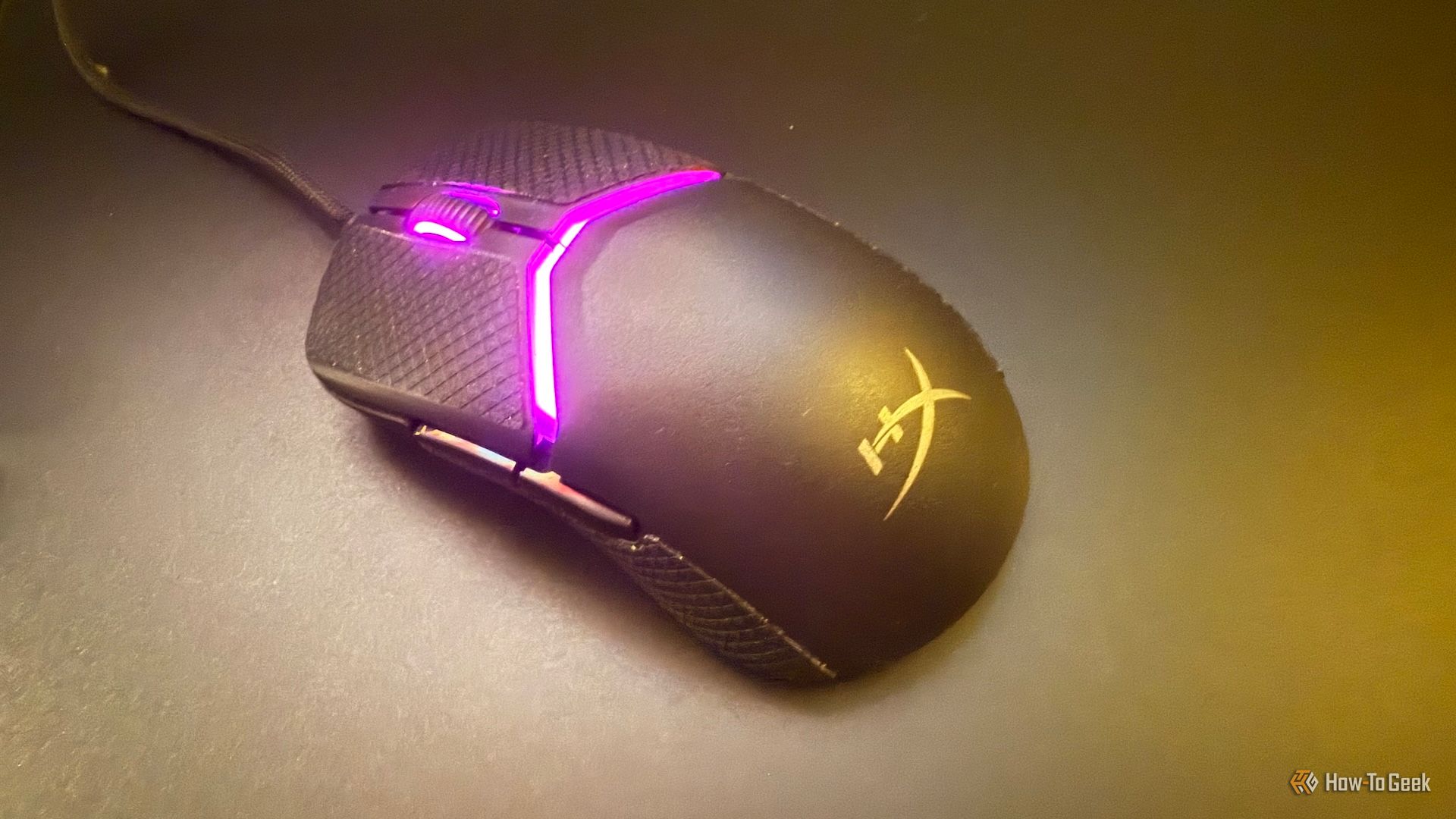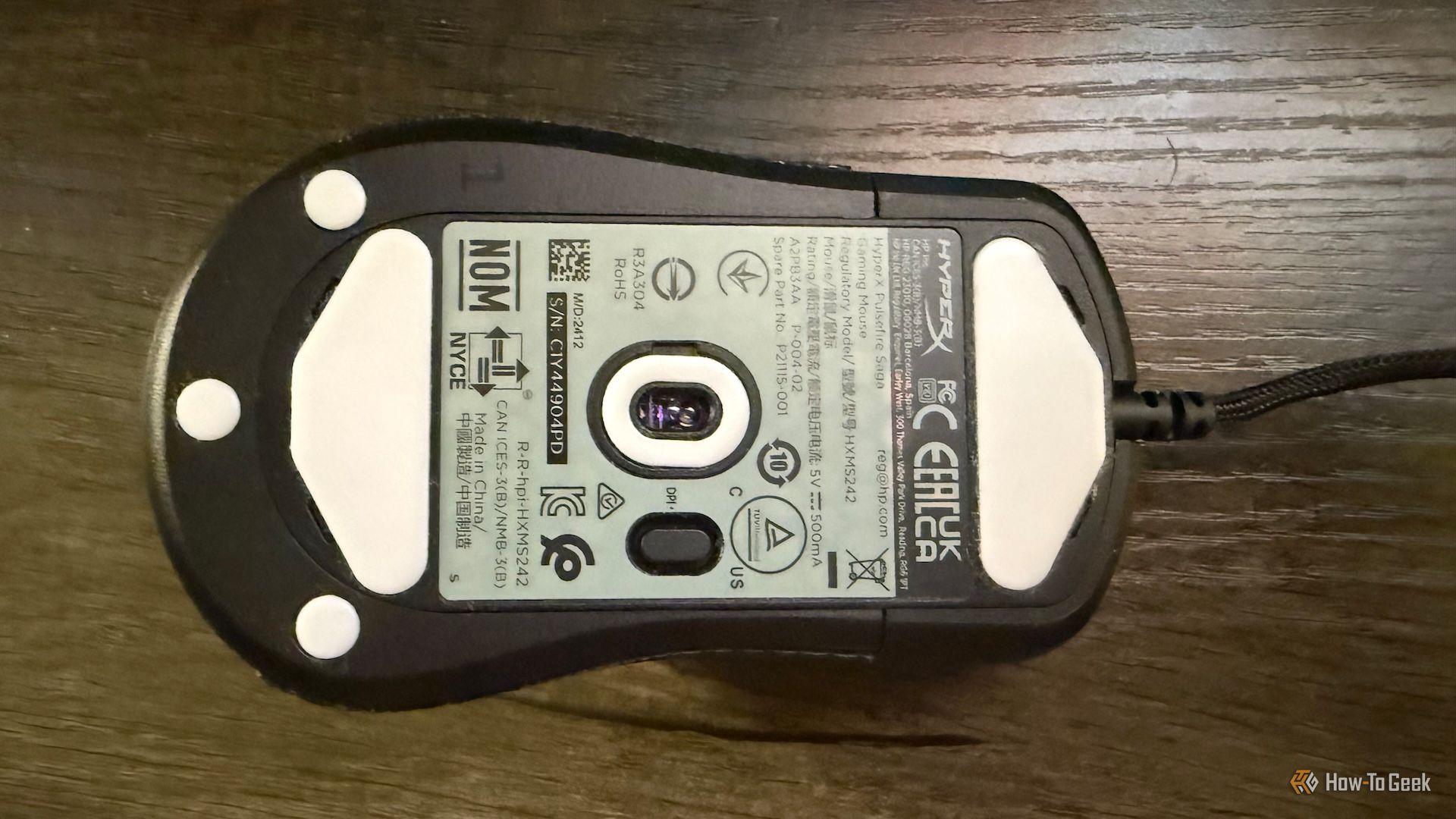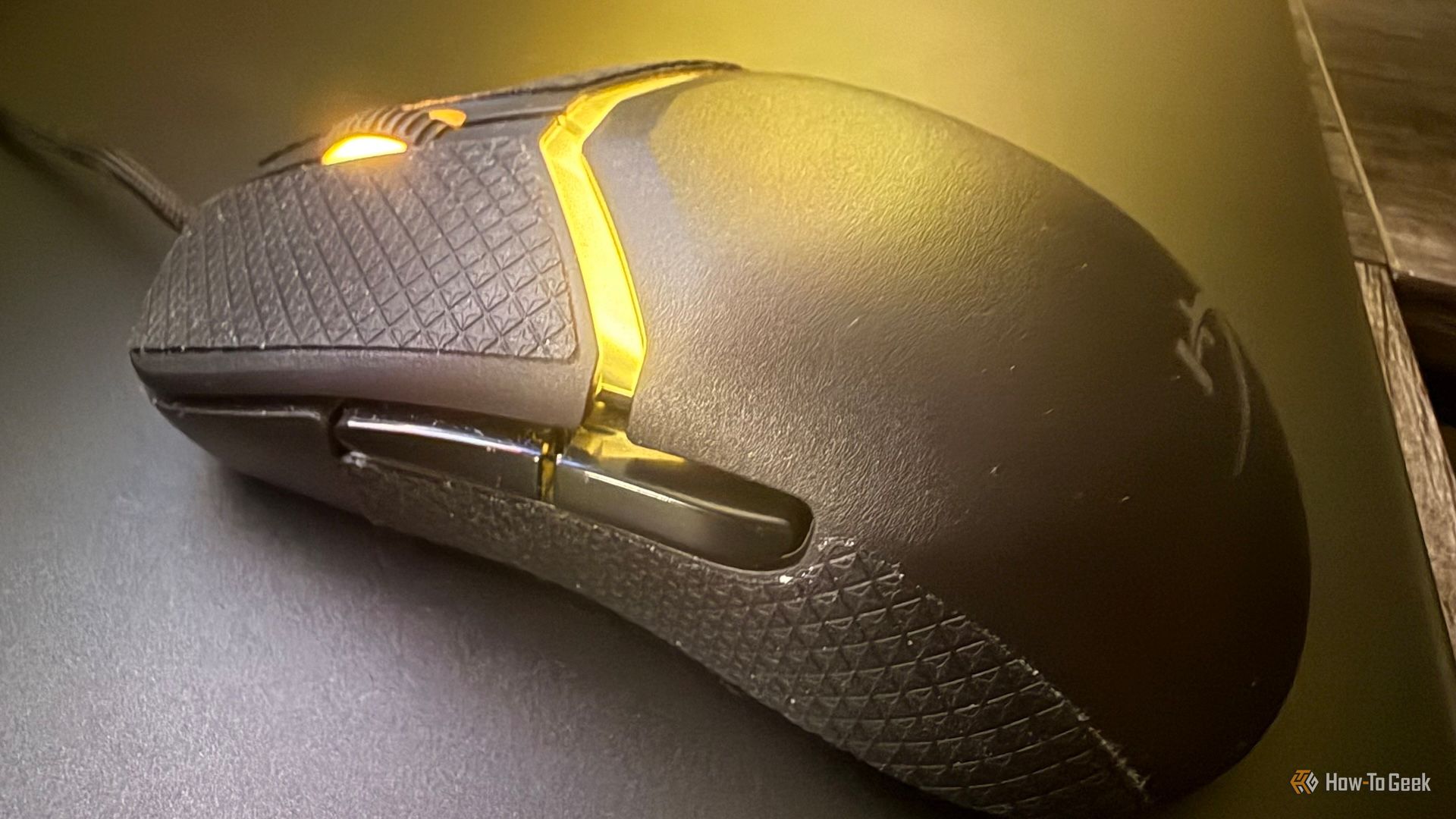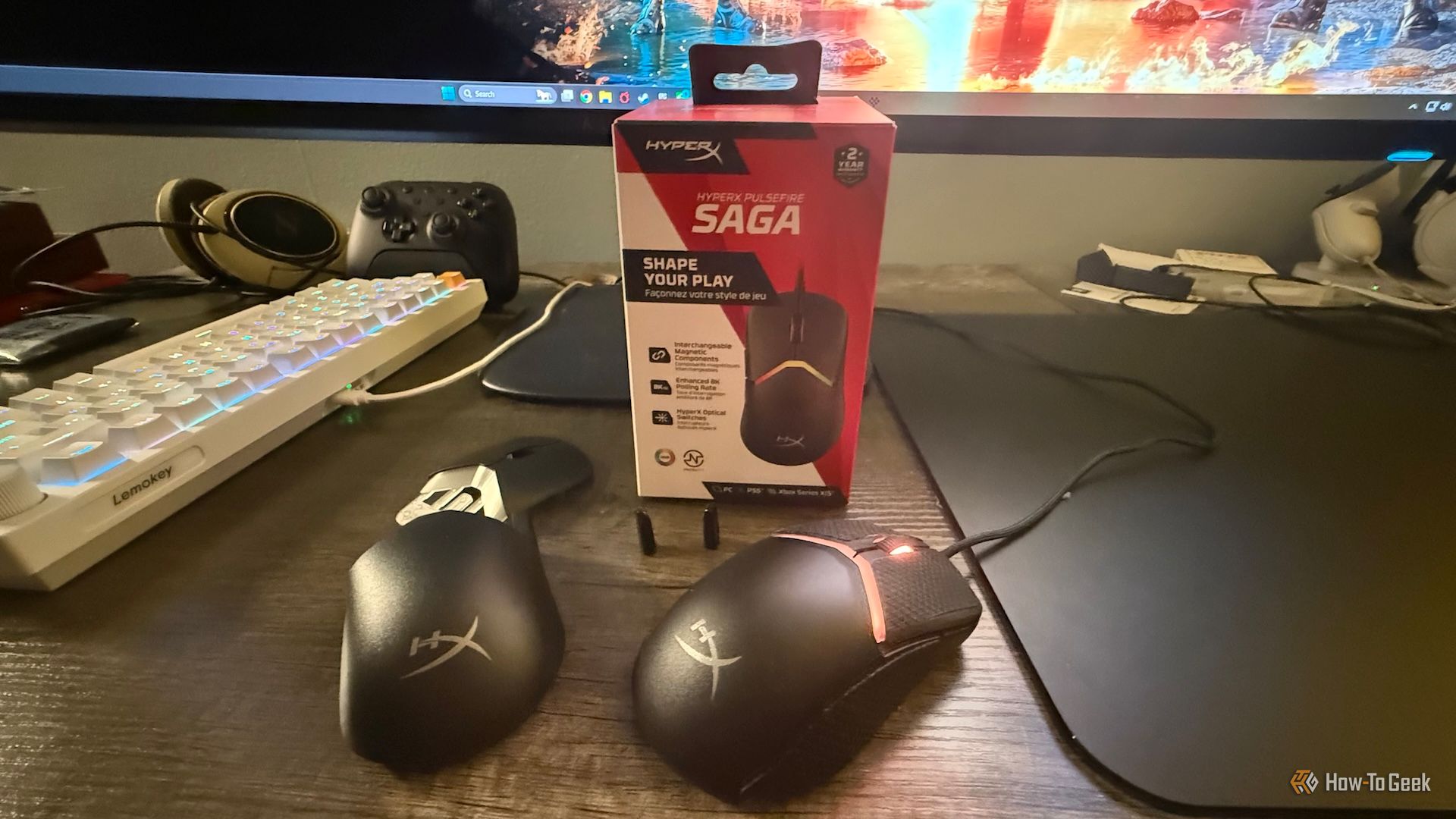Summary
- The HyperX Pulsefire Saga features a modular design that lets you hot swap its buttons and shell, with support for 3D-printed parts.
- The mouse’s wire is loose and frictionless enough that it’s not noticeable, aiding the mouse’s lightweight feel and smooth skates.
- Issues with the mouse include using cheap-feeling plastic for the side buttons and a tiny scroll wheel.
Wired mice are performant and affordable, but the trade-off of a tether has always been a deal-breaker for me. However, the HyperX Pulsefire Saga has me reconsidering this stance, and not only because of its innovative modular design.
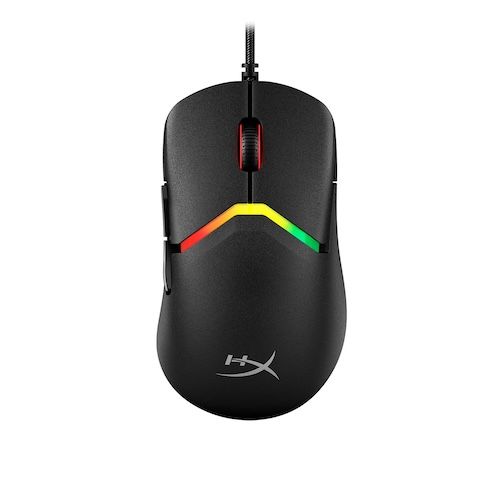

HyperX Pulsefire Saga
An ultralight wired gaming mouse with a modular design. It comes with alternate hot swappable parts and supports 3D printed parts, including those provided by HyperX.
- Hot swappable parts
- Swapping is easy
- Satisfying and performant optical switches
- The wire is unnoticeable
- Small scroll wheel
- Plastic side buttons feel cheap
- Skates are prone to collecting dust
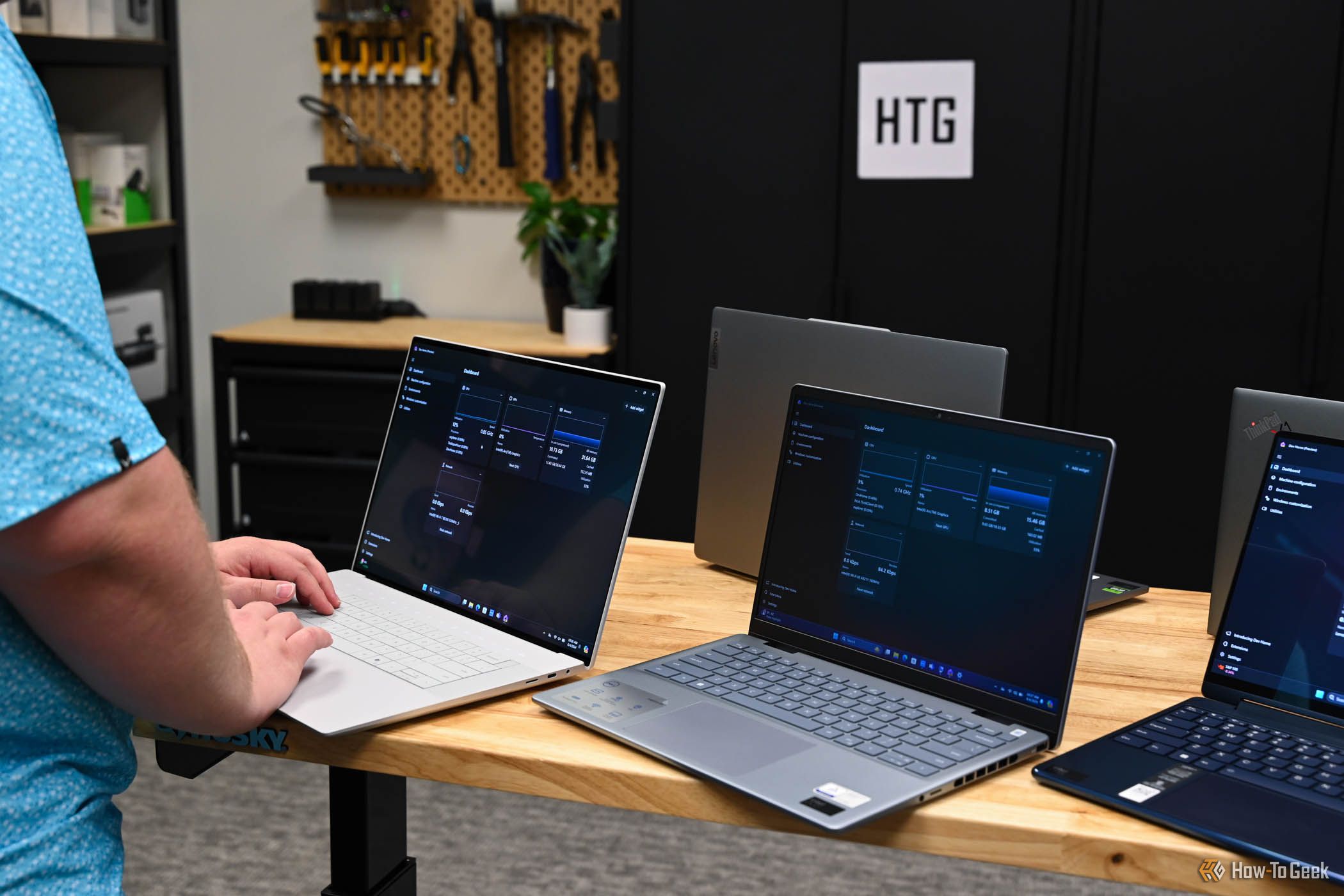
See Our Process
How We Test and Review Products at How-To Geek
We go hands-on with every product to ensure it’s worth your time and money.
Price and Availability
The HyperX Pulsefire Saga retails for $79.99. It comes with a set of interchangeable parts for its shell, button covers, and side buttons, as well as extra skates and a set of grip tape. The mouse’s cable isn’t detachable and connects via USB-A.
A wireless version of the mouse retails for $119.99.
Make Your Own Mouse
The main selling point of the HyperX Pulsefire Saga is its modularity. This isn’t the first gaming mouse to offer hot swappable parts, but it may be the most comprehensive and DIY-friendly.
Taking apart the mouse couldn’t be easier. The shell slides off with a slight tug and slots back magnetically. From there, you can lift the left and right button covers and pull off both side buttons. You’re given two options for each of these slots to mix and match between, and every combination works.
I had a lot of fun trying out different permutations until landing on one that worked best for me. The remaining parts ended up zipped away in a plastic bag after that point, but the value of being able to ensure the mouse fits my hand rather than being stuck with an unchangeable shape that doesn’t is immense. HyperX also offers open-source models for 3D printers, making for endless modding possibilities if you have the tech for it.

Related
My greatest fear about the Pulsefire Saga’s modularity was that it’d undermine the integrity of the mouse’s build, with such mishaps as the shell sliding off with sweaty palms. These fears proved to be unfounded. I often forgot about the mouse’s modularity altogether after finding my desired build, which is to say the feature never detracted from the experience. If I had to nitpick, there’s a slight jiggle to the side buttons, though it’s nothing that ever bothered me in-game.
Like many gaming mice, grip tape you can optionally apply is included. The material is comfortable and shaped well to the contours of the mouse, though HyperX should’ve included a second set for people who want to regularly hot swap parts.
A Shockingly Smooth Performer
The modularity of the Pulsefire Saga is cool, but what truly won me over was its near-invisible wire.
The 5.9-foot wire comes already feeling well-worn, making it extremely flexible with just the tiniest bit of slack. Any friction from the wire rubbing against a mousepad is negated by its light weight and the smooth texture of its braiding.
I also loved the weight of the mouse itself. At 2.43 oz (69g), it sits at a comfortable midpoint between pricier ultralight mice and heavier (sometimes cheaper) ones. It’s a good fit for anyone who feels using an ultra-light mouse is like pushing around hollow plastic but still wants to maintain the dexterity that it offers.
The six well-placed skates bolster this with exceptionally smooth movement across surfaces. They’re unfortunately also dust magnets, and if there’s one thing I tired of quickly when using the Pulsefire Saga, it was cleaning the skates.
The optical switch used for the buttons leads to quick, precise inputs. The travel time and force of each click may be just short of optimal for twitchy online FPS games, but as someone who doesn’t play that style of game, I found the tactile feel to be satisfying. The switches used for the side buttons also feel responsive, aided by your ability to choose between multiple buttons to find the ones most comfortable for your hand.
One thing the Pulsefire Saga has over its wireless “Pro” sibling is an 8K polling rate. While high polling rates are more likely to hinder players than help due to higher CPU usage, it’s still a big plus if you care about that functionality. Paired with a 26K DPI sensor and 650 IPS, this mouse is competitive at its midrange price.
A Few Downsides Keep It From Perfection
There are a few marks against the Pulsefire Saga that dampened my enthusiasm for it.
First, it retains the small scroll wheel and cheap-feeling side button plastic that I took umbrage with in my review of the Pulsefire Fuse. The situation’s a little less dire here as the side buttons are much more comfortably shaped and paired with superior switches, but I wish HyperX would just make them out of the same material as the shell. As for the scroll wheel, it’s small and stiff enough that any game or task that requires ample use of it will be a bit of a pain.
Also, the NGENUITY customization software is pretty basic and largely useless after setting up your preferred DPI and RGB pattern. The RGB is going to be unimpressive to anyone that cares about lighting, but it’s also a non-issue if you don’t.
Should You Buy the HyperX Pulsefire Saga?
If you’re in the market for a midrange wired mouse or want to give one a try, the HyperX Pulsefire Saga is an easy recommendation. Its modularity is a game-changer when it comes to purchasing decisions as there’s a high likelihood that you’ll find a suitable configuration for your hand (and if not, you can 3D print your own). Also, its wire was never noticeable to me, making for an experience that was interchangeable with wireless mice.
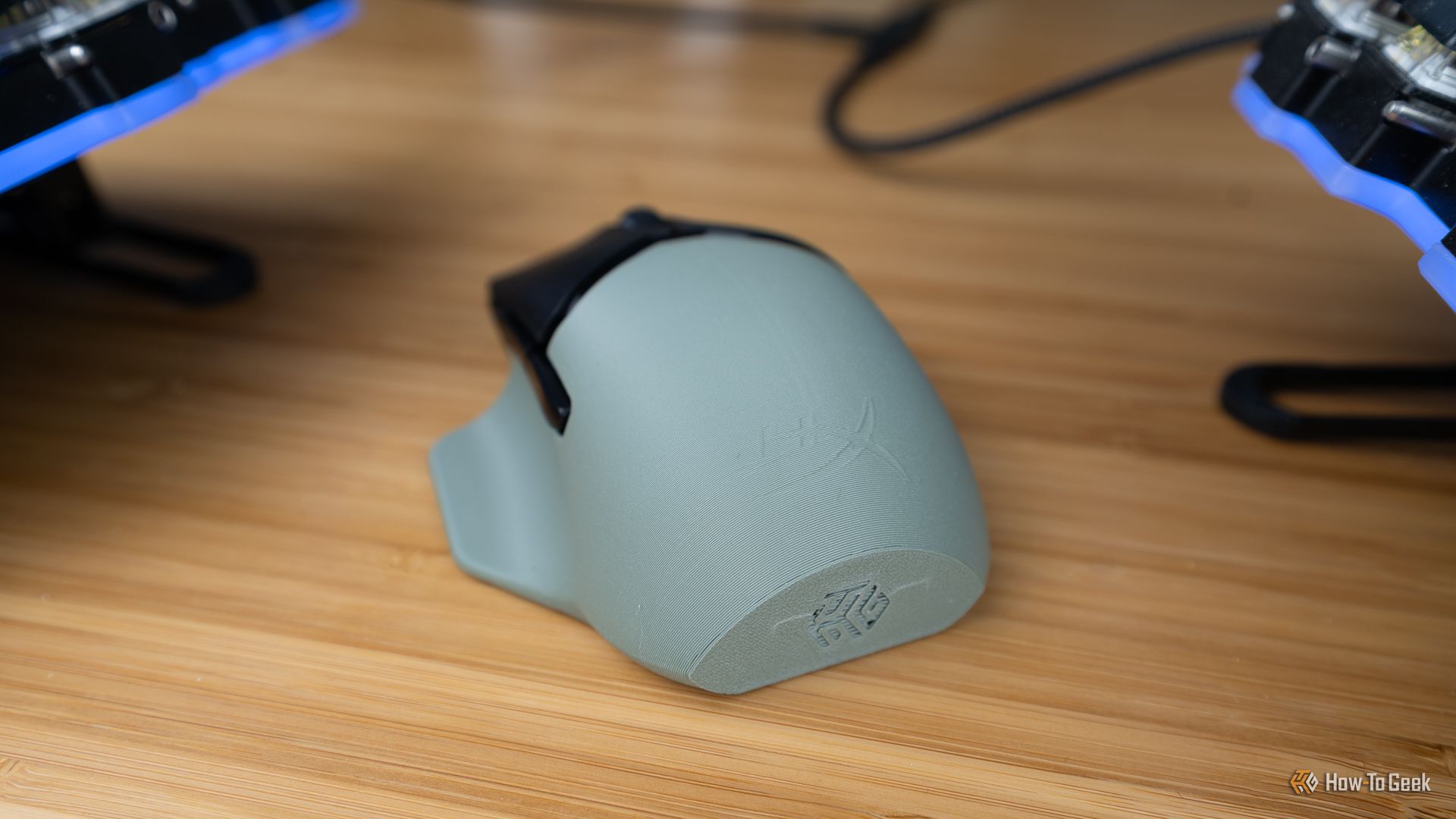
Related
HyperX Pulsefire Saga Pro Review: The Most Personalized Mouse I’ve Ever Used
A mouse you can style like a Sims character.
If the modularity of the mouse sounds good but you need wireless functionality, the near-identical HyperX Pulsefire Saga Pro is available for $40 more.


HyperX Pulsefire Saga
An ultralight wired gaming mouse with a modular design. It comes with alternate hot swappable parts and supports 3D printed parts, including those provided by HyperX.


